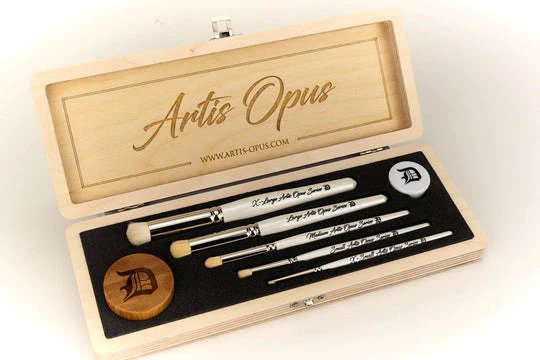Ah the humble drybrush. For most of us a drybrush was not a brush you purchased, so much as a brush that was made when your regular painting brush became frayed from use or lack of maintenance. There were always purpose made brushes on the market, and a lot of folks found that cheap makeup brushes worked well, but for the most part drybrushes were not given the same level of respect as fancy Kolinsky Sable detail brushes. Things have changed.
You may have noticed an increasing number of painters using some distinct white brushes for drybrushing recently. Made by Artis Opus, these “Series D” brushes are fit for purpose drybrushes, designed from the ground up to be the best drybrushes on the market. The price is up in the range of those Kolinsky Sable brushes so the question is: are they really worth it?
The short answer is yes, the long answer is in the rest of this review.
A New Method.
The Artis Opus brushes are not just drybrushes. In fact, they’re really designed for “dry” brushing at all. These new brushes have been designed to be used with a tiny amount of water. Moistbrushing if you will.
While not a completely new technique, it has taken the painting community by storm. For good reason. While traditional drybrushing is great for achieving quick results, it has a lot of drawbacks. Drybrushing tends to leave your minis looking chalky and the paint build up can obscure details. Because both the paint and brush is dry, changing colors is a challenge and it’s hard to blend colors.
The Artis Opus method alleviates quite a few of those issues. The by slightly moistening the brush, you change the way paint behaves. It comes off the brush smoothly which eliminates chalkiness, and minimizes detail obscuring. More importantly it allows you to blend colors. With a damp brush you can add brighter and brighter colors to your palette, blending in the brush as you load it.
Combining these elements opens a lot of doors. Using these brushes to both stipple and drybrush allows you to create smooth airbrush-style blends without an airbrush. This image is a screenshot from an Artis Opus video where an entire AT-ST is blended in an almost non-metallic metal fashion using only these drybrushes.
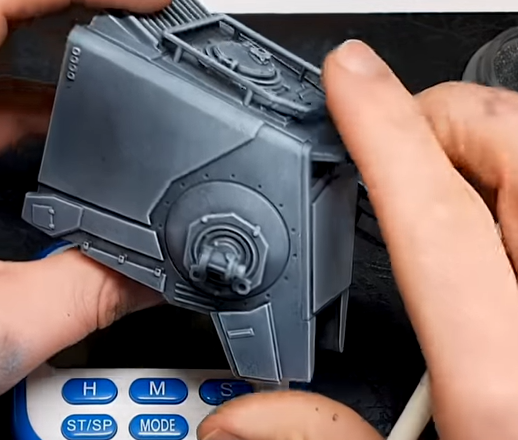
The Tools
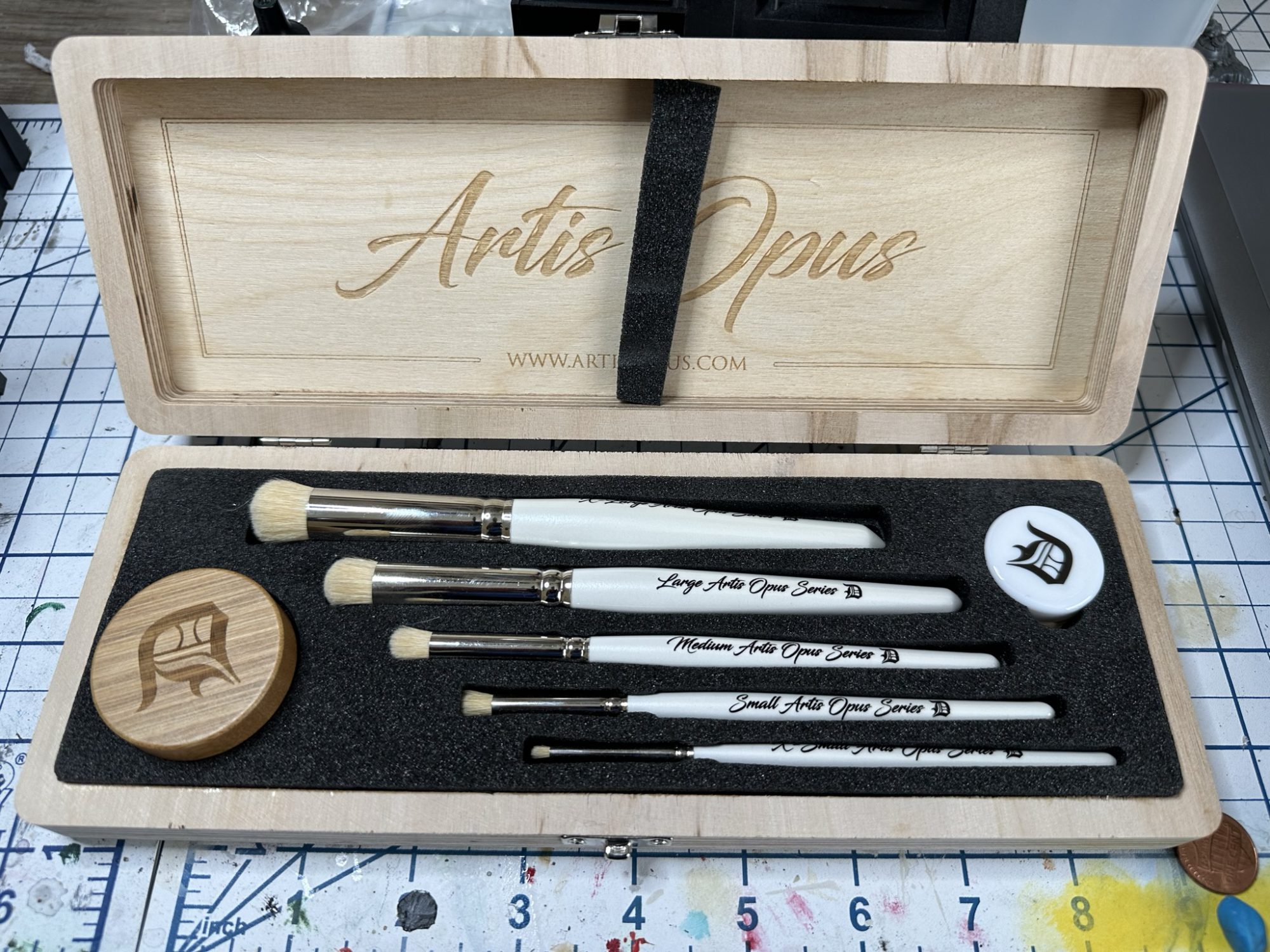
Artis Opus sent over their Deluxe 5 brush set. Brushes are available in various sizes individually, but one of the key elements that the sets include is the moistening pad. It’s not much more than a bit of sponge but notably it’s not kitchen sponge material and feels closer to foam from a pluck foam miniatures case or blister pack.
The Artist Opus brush handles have been designed so that you can dunk them in your water pot and drop roughly the right amount of water off the brush onto your sponge. Again, you want a very slight amount of water; far less than you’d get dipping your brush into a water pot or onto a wet paper towel. The pad helps achieve the right amount of water.
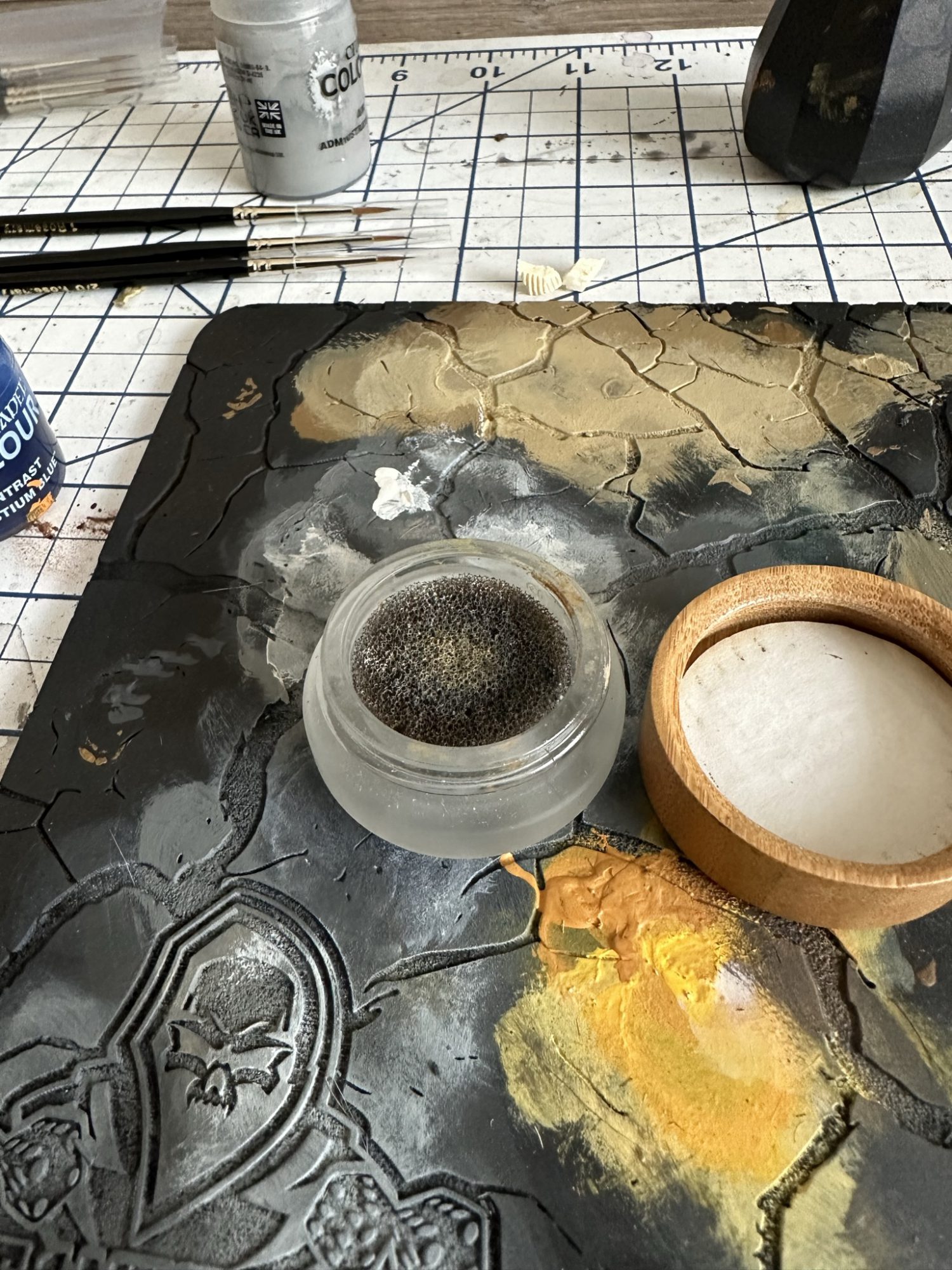
The brushes themselves come in 5 sizes. Generally you want to use the largest brush size you can, only dropping to a smaller brush when the geometries of your model prevent the larger size from being effective. The brushes feel sturdy in the hand and the bristles are densely packed. I’ve used quite a few makeup brushes over the years and these are much denser.
I haven’t had them long enough to know how long they’ll last, but I’ve heard from others that the bristles hold up for quite a long time. If things change I’ll update this review. So far each brush has shed some bristles onto my paint job, which is frustrating, but it seemed to be only a couple with first use and has gone away.
I have, unfortunately, already noticed that the handle on my Large brush is wiggling a bit where it attaches to the metal shank that holds the ferrule and bristles. It’s something I can fix easy enough once it separates, and I haven’t noticed it on any other brushes yet, but it is annoying.
Another useful tool is a texture palette or dry palette. Artis Opus sells a few of them though mine was procured on Etsy. They allow you to test how much paint is on your brush, and to dry the brush off if you over moisten it. The key it lots of textures and to prime it.
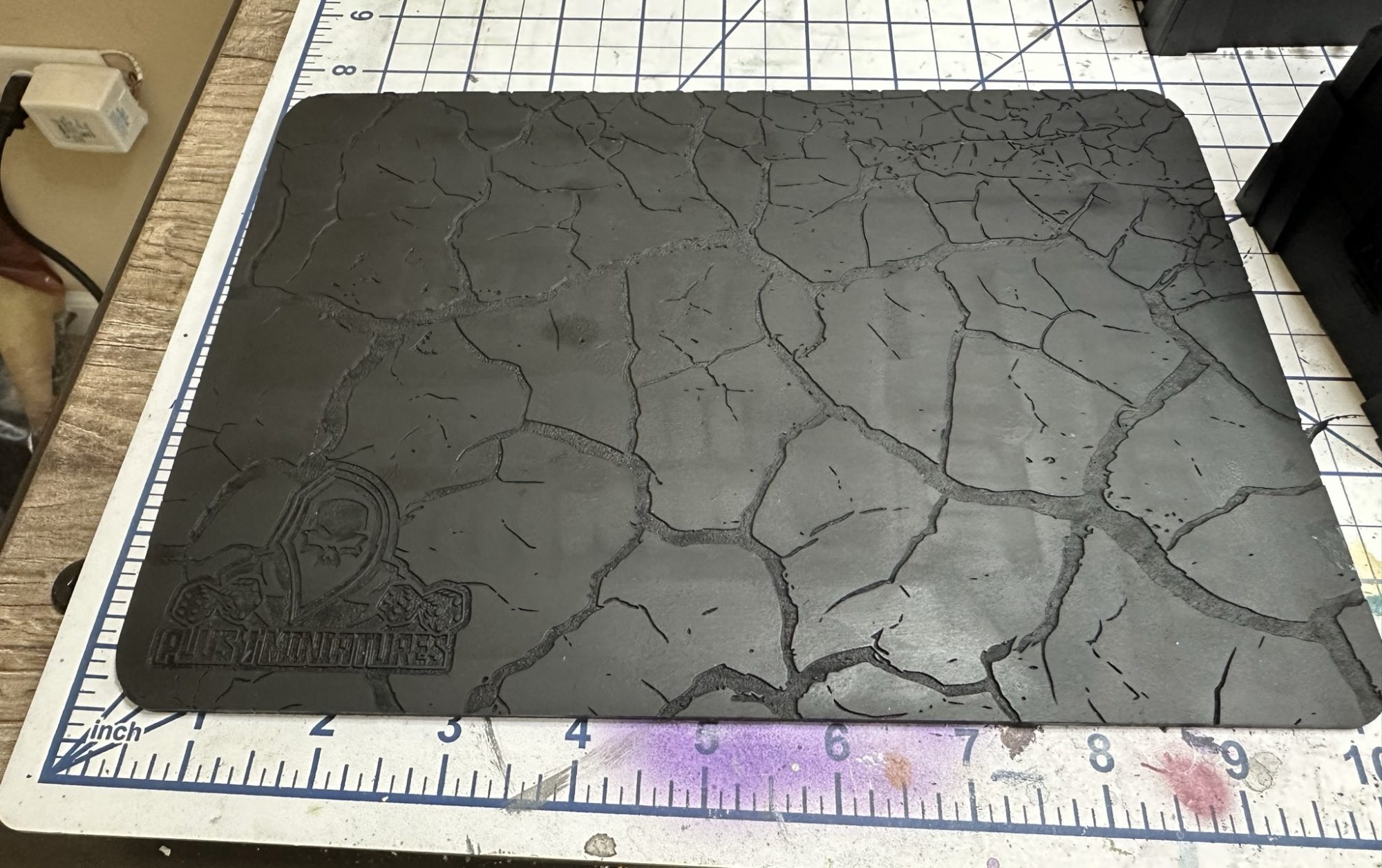
The Results
The first thing I tackled was my Star Wars: Shatterpoint terrain. Stippling is a big part of the Artis Opus technique, which is perfect for the textured sandy appearance of buildings in the Star Wars Universe. While my goal was a textured appearance, I did want to show that you can get an even coat using these brushes.
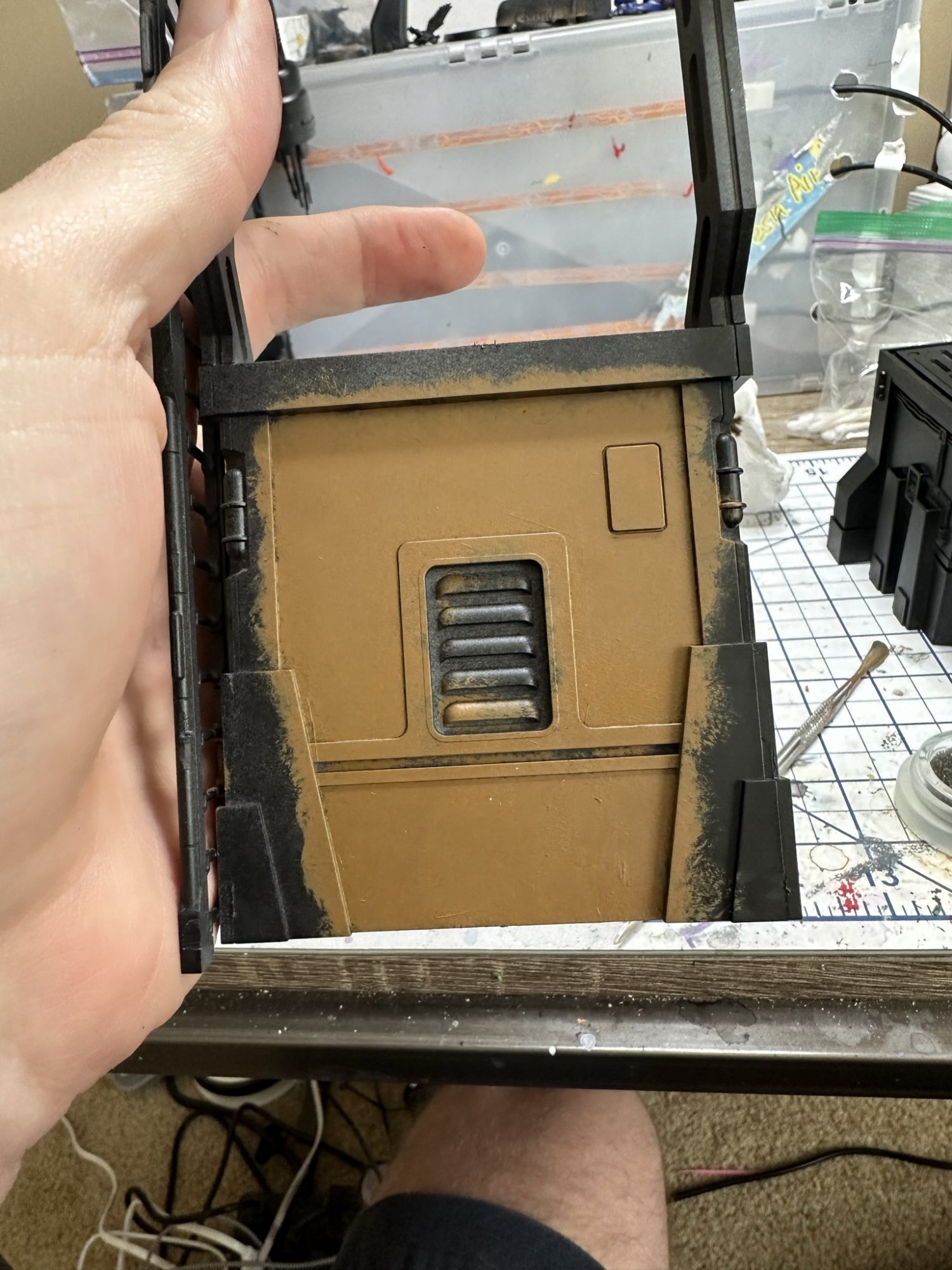
This terrain uses a base layer of XV-88, before building up texture with Zandri Dust and eventually Screaming Skull. As I said above, I didn’t bother to clean my brush. I simply moved from color to color allowing them to blend in the brush and provide a natural variation.
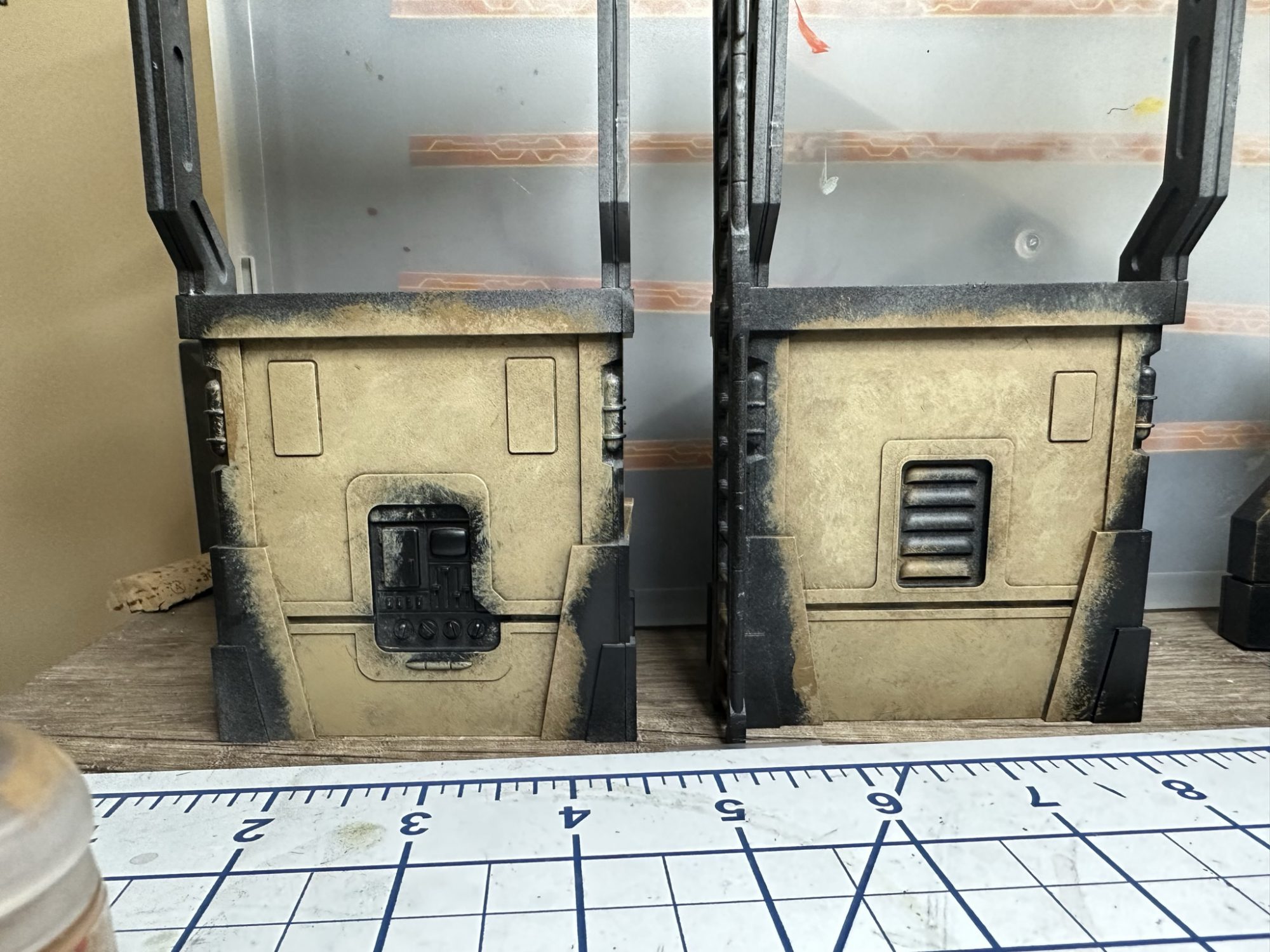
I am quite pleased with the final effect, and it looks exactly like a Tattooine or Jakku building. From here I moved into doing the trim using Eshin Grey into Dawnstone with a final edge drybrush of White Scar.
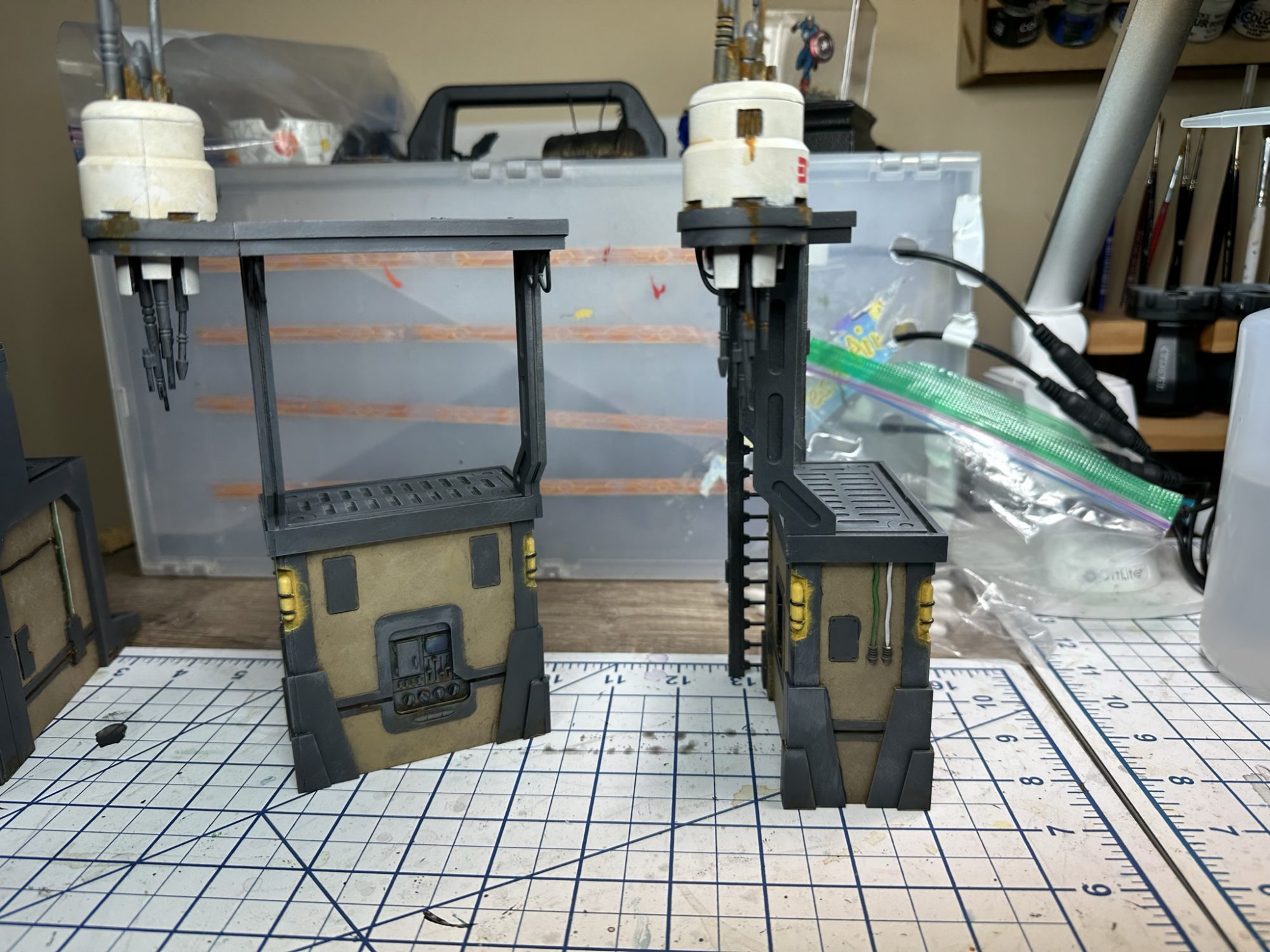
With the exception of things like the exposed wires and some of the light casing, I did the entire Shatterpoint terrain set with these drybrushes. Even the lights and screens on the databanks are done with drybrushes.
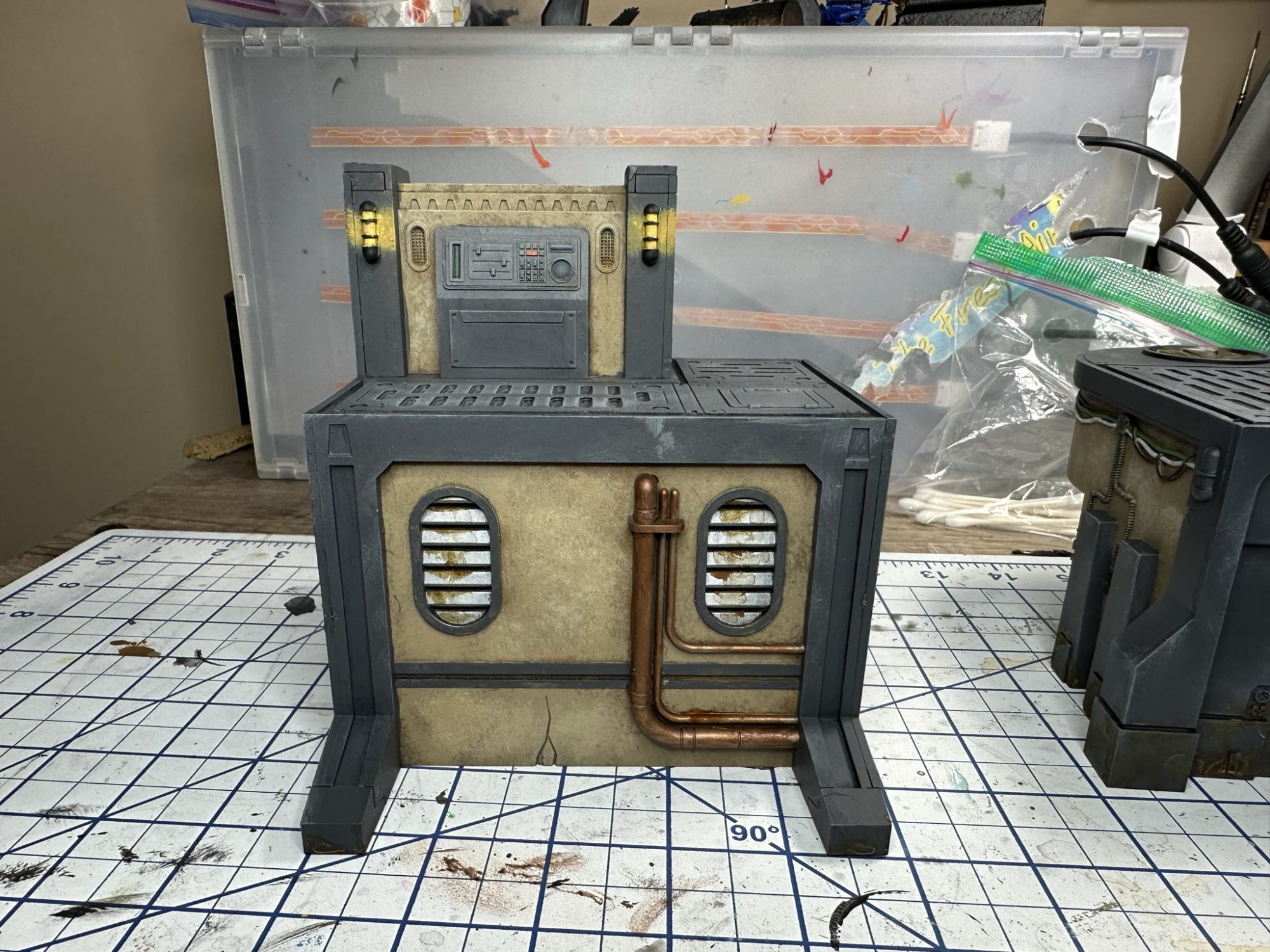
Here’s a final look at my palette where you can see I was able to blend right on the palette.
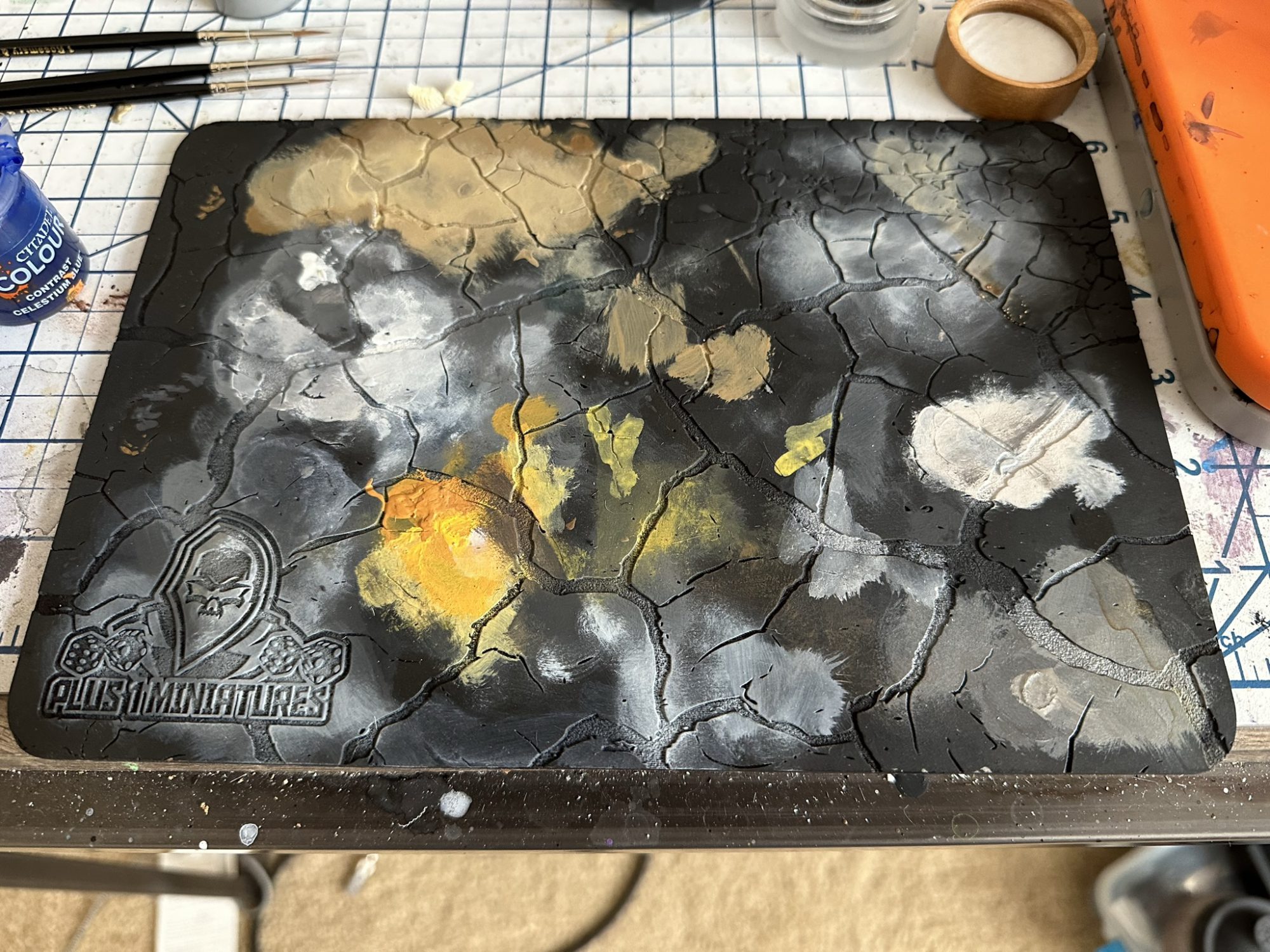
Wrap Up
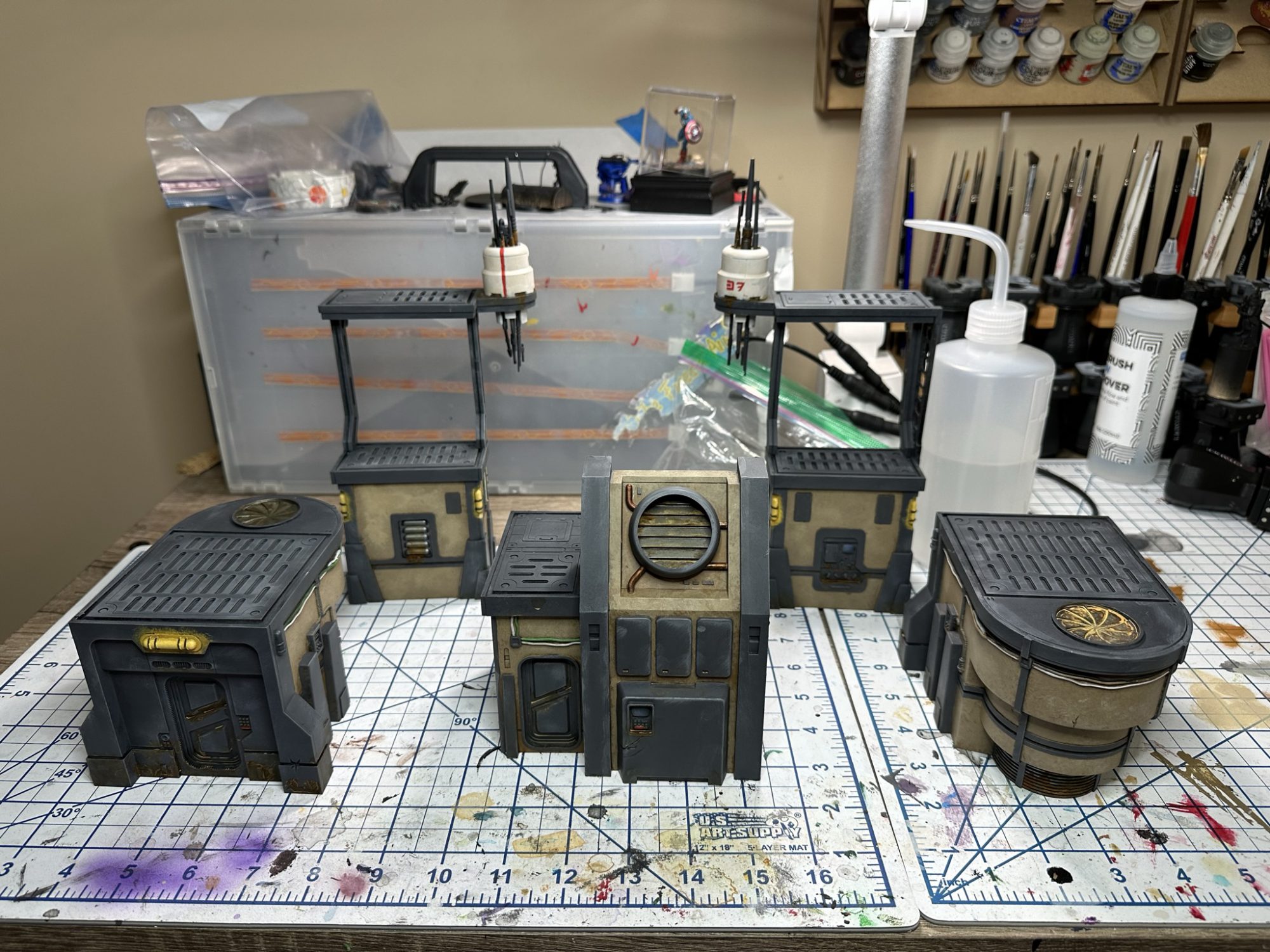
The brushes, and the Artis Opus technique, work like a dream. They are not cheap; prices vary based on size but they run in the range of $20 per brush. They are, however, easily the best drybrushes I’ve ever used. They’re lightyears ahead of makeup brushes (as they should be) and should last longer.
The ability to produce blends on par with an airbrush makes these hugely versatile pieces of equipment. Yes they can be used for traditional drybrushing, but their design unlocks other techniques and use cases. Tanks and large models can be approached with these in a way I would normally have reached for my airbrush.
You can pick up a set from Artis Opus at this link.
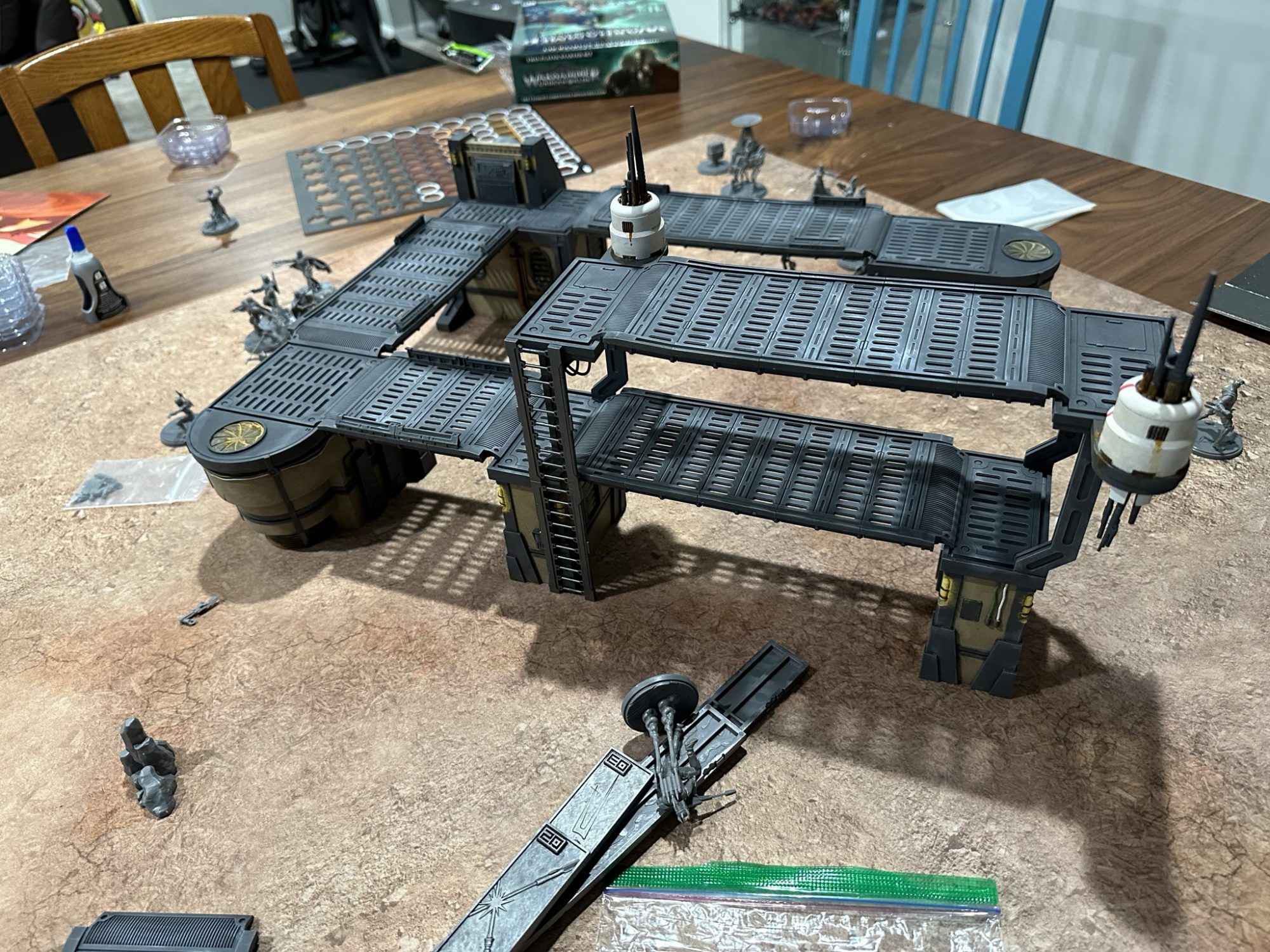
A set of brushes was provided by Artis Opus for the purposes of this review.
